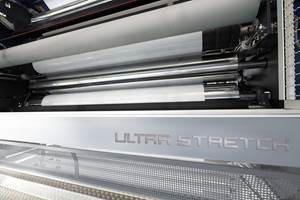Pricing Update - March 2006
PE, PS, and PVC prices remained flat or softened further in February, aided by slack demand and lower feedstock costs.
PE, PS, and PVC prices remained flat or softened further in February, aided by slack demand and lower feedstock costs. But PP was a different story: Prices were rising and supply was tight.
PE prices down
Polyethylene prices dropped 2¢/lb in February, following slippage of 8¢/lb in the two previous months. That left prices about 26¢/lb above where they were at the start of 2005.
Suppliers tried to reverse the downward momentum with 5¢/lb price increases for March 1. Last month, prices were also moving up at the London Metal Exchange, where the March short-term futures contract for g-p blown film butene LLDPE sold at 58.5¢/lb, up from February’s 55.6¢ and January’s 51.26¢/lb.
Contributing factors: Resin tabs in December and January sank under the weight of weaker demand as processors drew down inventories. Ethylene monomer also dropped 3¢/lb in January, having held at about 56.3¢/lb for a few months. February contracts looked set to drop another penny.
Although resin demand started to pick up by the end of January, competitive action drove prices a couple of cents lower. However, suppliers appear to be optimistic about prospects for the March 1 price hike, even if it may not be implemented until next month. On Jan. 31, Nova Chemicals reported that repairs had been completed at its Ontario feedstock facilities and its PE and PP production was returning to normal.
Industry sources expect prices to firm up and perhaps move higher as the year progresses. There is very little inventory throughout the supply chain, and resin capacity utilization is expected to rise from the high 80s to above 90%.
PP prices up
Polypropylene prices were on the rise last month as suppliers fully implemented a 4¢/lb increase. Between mid-January and Feb. 1, new price initiatives brought the total increase being sought to 8¢ to 10¢/lb. Some suppliers called for an increase of 10¢ on Feb. 1 while several others issued new hikes of 4¢ to 6¢/lb for Feb. 15.
The London Metal Exchange’s March short-term futures contract for g-p injection-grade homopolymer rose to 54.9¢/lb, from February’s 52.2¢ and January’s 47.85¢/lb.
Contributing factors: One factor behind the uptick in prices is pressure from monomer. January propylene contracts were up 4.5¢/lb and February contracts were expected to gain another 5¢ or more. Unplanned reactor outages tightened monomer supply.
Resin supply is tight as well, with supplier inventory levels below 40 days, while plant utilization rates are around 95% or more. Suppliers report a large increase in demand, only partially explained by inventory replenishment.
PVC drops 1.5¢
PVC producers’ 2¢/lb increase for Feb. 1 was postponed when Formosa told customers in mid-February that they could cut 1.5¢/lb off their contract price, and processors expect to pay even less.
Contributing factors: Attempts to raise PVC prices in January and February failed, as PVC demand has been soft with no sign yet of spring buying or inventory building. Siding and window production remain strong, but pipe demand is soft since December.
Spot prices for vinyl feedstocks were also lower in mid-February. Natural gas was at $7/MM Btu, down from its peak of $8 to $9 last year.
PS prices flat
Attempts to raise polystyrene prices 6¢ in February were delayed. Both PS and EPS were expected to remain flat for the month.
Contributing factors: PS prices held in February because contract benzene tabs were so high—$2.86/gal, up from $2.46 in January—but spot benzene is down around $2.65. Coupled with a mild winter, the market decided that feedstock prices had peaked. Styrene monomer production, heavy in January, softened in February. Ethylene monomer is expected to drop 4¢/lb.
Nylon, ABS, SAN, epoxy up
Nylon price increases were posted by at least two suppliers. BASF hiked nylon 6 extrusion resins by 5% as of Feb. 1, and DSM said it would raise prices of nylon 6 extrusion grades by 6¢/lb in February as well.
BASF also raised prices of ABS and SAN by 4¢/lb on March 1.
Dow Chemical added 10¢/lb to cycloaliphatic epoxy prices on March 1.
| Market Prices Effective Mid-Feb A |
|
|
KEY: Colored areas indicate pricing activity. An arrow () indicates direction of price change. aTruckload, unless otherwise specified. bUnfilled, natural color, unless otherwise specified. cBased on typical or average density. dNot applicable. eNovolac and anhydride grades for coils, bushings, transformers. fNovolac and anhydride grades for resisitors, capacitors, diodes. gIn quantities of 20,000 lb. h19,800-lb load. jLME 30-day futures contract for lots of 54,564 lb.. |
Related Content
Polyethylene Fundamentals – Part 4: Failed HDPE Case Study
Injection molders of small fuel tanks learned the hard way that a very small difference in density — 0.6% — could make a large difference in PE stress-crack resistance.
Read MoreThe Fundamentals of Polyethylene – Part 1: The Basics
You would think we’d know all there is to know about a material that was commercialized 80 years ago. Not so for polyethylene. Let’s start by brushing up on the basics.
Read MorePrices Drop for All Five Commodity Resins
While PE price reductions were not as apparent, they too were following the year-end price trajectory of PP, PS, PVC and PET.
Read MoreApril 2025: Mixed Bag for Prices of Volume Resins
The end of the first quarter marked higher prices for polyolefins and relatively flat pricing for nearly all other resins.
Read MoreRead Next
See Recyclers Close the Loop on Trade Show Production Scrap at NPE2024
A collaboration between show organizer PLASTICS, recycler CPR and size reduction experts WEIMA and Conair recovered and recycled all production scrap at NPE2024.
Read MoreFor PLASTICS' CEO Seaholm, NPE to Shine Light on Sustainability Successes
With advocacy, communication and sustainability as three main pillars, Seaholm leads a trade association to NPE that ‘is more active today than we have ever been.’
Read MoreBeyond Prototypes: 8 Ways the Plastics Industry Is Using 3D Printing
Plastics processors are finding applications for 3D printing around the plant and across the supply chain. Here are 8 examples to look for at NPE2024.
Read More












